Pangu : The First Creator Who Shaped the Chinese Cosmos
Listen
At a glance
| Description | |
|---|---|
| Origin | Chinese Mythology |
| Classification | Gods |
| Family Members | N/A |
| Region | China |
| Associated With | Creation |
Pangu
Introduction
In the vast and poetic world of Chinese mythology, Pangu (盘古) stands as the ultimate symbol of creation and cosmic balance. Often regarded as the first living being and the divine architect of the universe, Pangu’s myth captures the moment when chaos gave birth to order, when the void transformed into the living cosmos. According to legend, before all existence, there was only a formless egg that held the chaotic mixture of yin and yang. From this primordial sphere, Pangu emerged, awakening as the embodiment of life and order. As he grew, he cleaved the chaos with his axe, separating the heavens from the earth. His actions laid the foundation for all that would follow—the stars, the mountains, the rivers, and even the breath of life itself.
The earliest recorded version of Pangu’s myth appears in Xu Zheng’s “Sanwu Liji” (Records of the Three Sovereigns and Five Emperors) during the Three Kingdoms period (220–280 CE). However, oral traditions likely existed long before, transmitted across generations of storytellers and scholars. The story of Pangu reflects a deeply Taoist worldview, rooted in balance, transformation, and the cyclical nature of creation. It is not merely a tale of beginnings—it is a profound allegory for harmony between heaven, earth, and humanity.
Physical Traits
Pangu is often portrayed as a cosmic giant, immense and powerful beyond imagination. His very existence personified the forces of nature—untamed, creative, and boundless. Ancient depictions describe him as covered in thick hair or fur, with horns upon his head and muscles like mountains. His most recognizable attribute is the great axe, a symbol of divine strength and the instrument with which he shattered the primal chaos. As Pangu worked to separate the sky and earth, he grew ten feet taller each day for 18,000 years, ensuring the heavens would never collapse back onto the land.
When Pangu finally completed his divine labor and passed away, his colossal body became the world itself. His breath became the wind and clouds, his voice the thunder, his eyes the sun and moon, and his blood the rivers that flow through the land. His flesh turned into fertile soil, his bones became mountains, and his hair sprouted into forests and stars. Even the parasites on his body transformed into animals and humans, symbolizing that all life shares a divine origin. Through his body, Pangu gave himself entirely to creation, merging spirit and matter into one harmonious whole.
Family
Unlike many deities in other mythologies, Pangu stands alone, without parents, siblings, or offspring. He is the self-born, a being who emerged from the cosmic void without precedent or lineage. His solitude underscores his role as both the first creator and the creation itself—the source of all that exists. However, later folk traditions sometimes pair Pangu symbolically with Nuwa (女娲), the goddess who molded humanity from clay. This association bridges the transition from the formation of the cosmos to the birth of humankind, suggesting a continuity in the divine creative process.
Some variations of the myth introduce four mythical beasts—the Dragon, the Phoenix, the Qilin, and the Turtle—who assisted Pangu during the formation of the world. These creatures represent the cardinal elements and cosmic forces, reinforcing the balance and harmony that underpin the Chinese view of existence.
Other names
The name Pangu (盘古) is rich with meaning. Linguistically, it is often interpreted as “Ancient Coiled One” or “Primordial Antiquity,” referring to his curled state within the cosmic egg before creation began. The term evokes the image of latent potential—energy waiting to burst forth into being. In older Western texts, his name was romanized as P’an-ku or Pan Gu, though all refer to the same mythical figure. Across China’s diverse regions and dialects, slight variations exist in pronunciation and emphasis, yet the reverence for his role remains universal. Each interpretation highlights his essence as the being who bridges chaos and creation, time and eternity.
Powers and Abilities
Pangu’s powers are deeply symbolic, expressing the creative and transformative forces of the universe rather than supernatural feats in a modern sense. His greatest act was the separation of heaven and earth, a task requiring immense strength and divine will. As he pushed the heavens upward with his axe and his own growing body, he established the foundations of cosmic balance—the duality of yin and yang, light and darkness, male and female, sky and soil.
Beyond physical might, Pangu’s most profound ability was transmutation—the transformation of his own essence into the material world. His death was not an end but the ultimate act of creation. Every part of his being was repurposed into natural elements, ensuring that life would continue indefinitely. This act symbolizes the Daoist ideal of unity, where all things are interconnected and constantly evolving from one state to another. Pangu thus becomes both creator and creation, an eternal cycle of death and rebirth woven into the fabric of the cosmos.
Modern Day Influence
Even in the modern era, the myth of Pangu remains a cornerstone of Chinese cultural identity. His story is retold in literature, art, theater, and film, serving as a timeless metaphor for perseverance, transformation, and the interdependence of all life. In schools, the story of Pangu is taught to children as an origin tale, often accompanied by vivid illustrations of the giant holding his axe beneath a bright, rising sun. Temples such as the Pangu King Temple in Guangdong continue to honor him, drawing pilgrims who seek blessings for strength, stability, and harmony.
In modern media, Pangu’s image has found new life. He appears in video games, graphic novels, and fantasy films, often reimagined as a heroic titan or celestial warrior. His myth also influences contemporary philosophy and environmental thought, reminding society of the sacred relationship between humanity and nature. As a representation of cosmic unity, Pangu embodies the balance between destruction and creation, a theme that resonates in an age increasingly concerned with ecological preservation.
Today, Pangu’s legacy is not confined to ancient scripture or temples—it lives on in the collective consciousness of a culture that still seeks harmony between heaven and earth. His myth endures as a reflection of the human quest for understanding the origins of existence, and the belief that from sacrifice and transformation comes all that is beautiful and alive.
Related Images
Source
Mythopedia. (2022). Pangu. https://mythopedia.com/topics/pangu/
Gods and Monsters. (2025). Pangu the Creator: Giant Who Split Heaven and Earth. https://godsandmonsters.info/pangu/
Roots of Civilizations. (2024). Exploring the Chinese Myth of Pangu and the Origins of the Universe. https://rootsofcivilizations.com/chinese-myth-of-pangu-and-universe/
EBSCO Research Starters. (2018). Pangu (deity). https://www.ebsco.com/research-starters/religion-and-philosophy/pangu-deity
Wikipedia. (2023). Pangu. https://en.wikipedia.org/wiki/Pangu
Storytelling DB. (2025). Pangu: The Creator God of Chinese Mythology. https://storytellingdb.com/pangu/
Ching, J. (1993). Chinese Religions. Macmillan Publishing.
Yang, L., An, D., & Turner, J. (2005). Handbook of Chinese Mythology. Oxford University Press.
Birrell, A. (1993). Chinese Mythology: An Introduction. Johns Hopkins University Press.
Wu, K. C. (1982). The Chinese Heritage. Crown Publishing Group.
Christie, A. (1968). Chinese Mythology. Hamlyn Publishing.
Lagerwey, J. (2010). China: A Religious State. University of Hong Kong Press.
Frequently Asked Questions
Who is Pangu in Chinese mythology?
Pangu is regarded as the first living being and the creator of the universe in Chinese mythology. According to legend, he emerged from a cosmic egg, separated heaven and earth, and shaped the natural world from his own body.
What is the meaning of the name “Pangu”?
The name Pangu (盘古) translates to “Ancient Coiled One” or “Primordial Antiquity,” referring to his curled position within the cosmic egg before creation and symbolizing the potential for life and transformation.
How did Pangu create the world?
Pangu split the chaotic void into heaven and earth using a mighty axe. As he grew for 18,000 years, he kept the sky and earth apart. Upon his death, his body transformed into natural elements—his eyes became the sun and moon, his breath the wind, and his blood the rivers.
Does Pangu have a family or descendants?
In most myths, Pangu is a solitary being with no parents or offspring. However, later folk traditions sometimes associate him symbolically with the goddess Nuwa, linking the cosmic creation to the birth of humankind.
How is Pangu remembered in modern Chinese culture?
Pangu remains a symbol of creation, balance, and transformation. His story is taught in schools, depicted in art and media, and honored in temples such as the Pangu King Temple in Guangdong. He continues to inspire philosophical thought and environmental awareness in contemporary China.






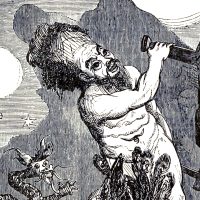



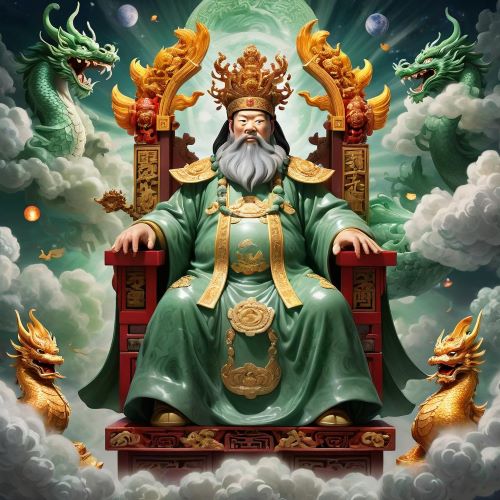
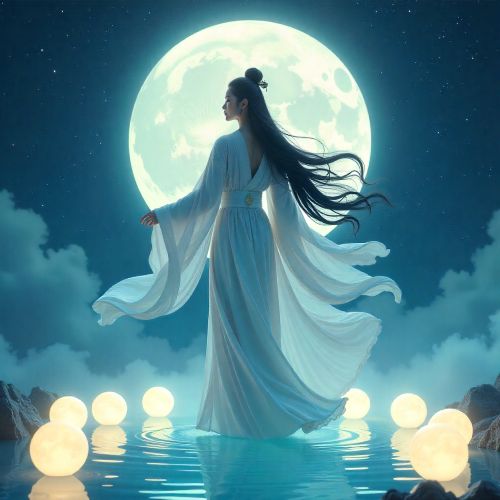
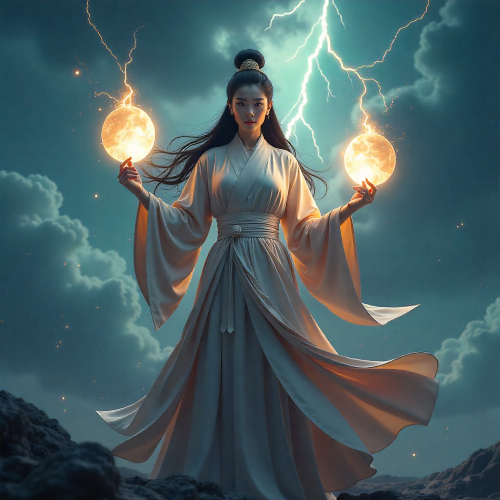
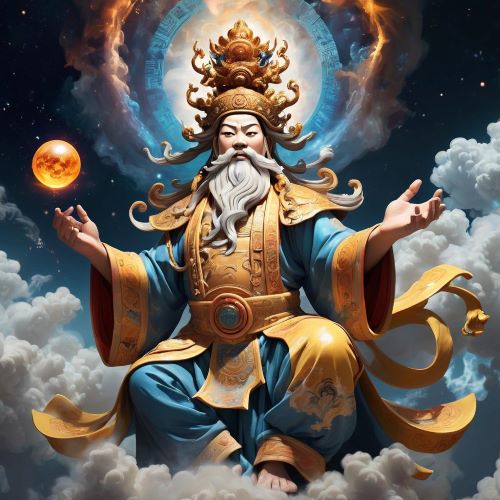
Football prediction software download
Pangus myth is simply brilliant – a cosmic giant splitting heaven and earth with an axe for 18,000 years? Talk about dedication, or maybe just extreme boredom! The way his very body became the world, with hair turning into stars and muscles into mountains, is both wonderfully poetic and slightly messy. Its a Taoist masterpiece, really, teaching balance and harmony while essentially throwing a cosmic party where everything gets recycled. And Pangu himself, being self-born and solitary, is quite the enigma – the ultimate cool cat of creation. Its a reminder that sometimes, the greatest origins stories involve someone just chilling in an egg before getting a bit ambitious. A truly inspiring, if slightly ax-heavy, tale!